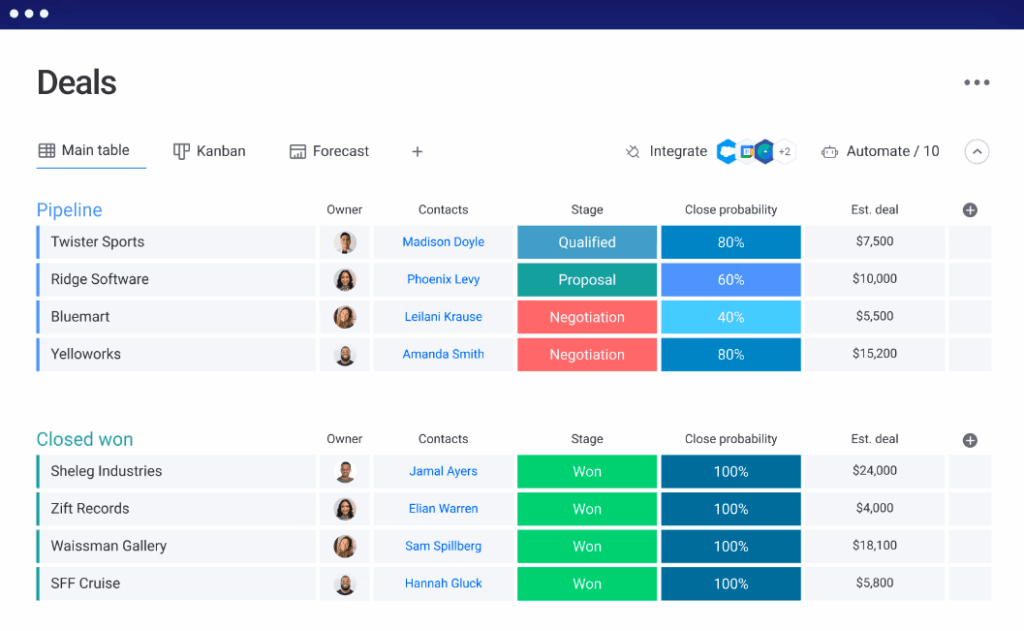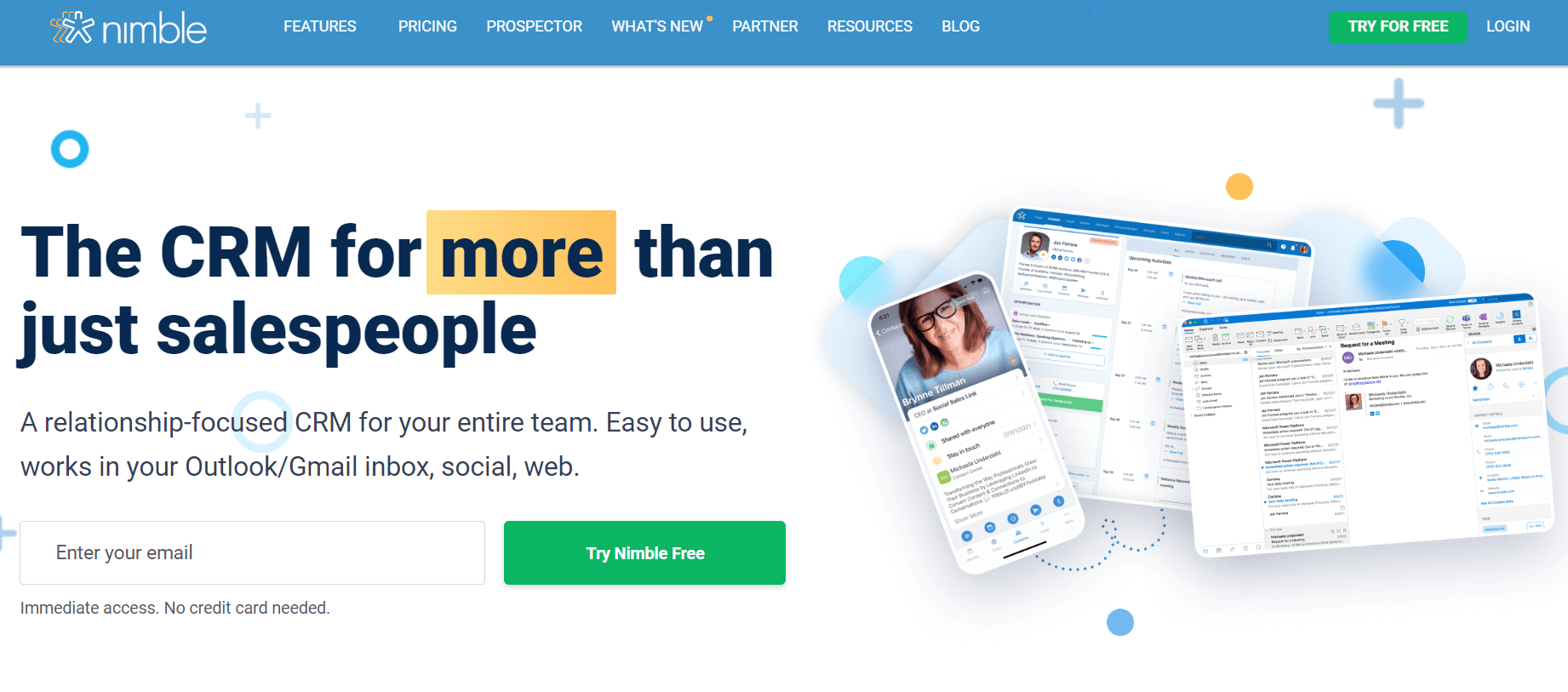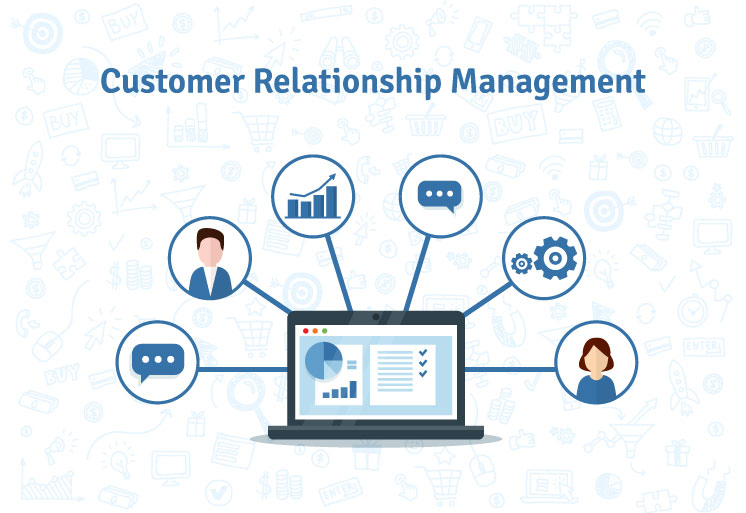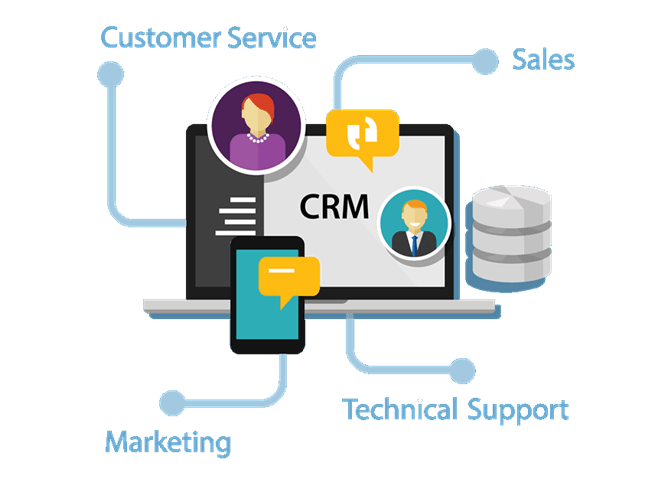
The Power of CRM for Small Businesses: A Foundation for Growth
Starting a small business is an exhilarating journey. You’re the visionary, the strategist, the doer – wearing many hats and juggling numerous responsibilities. In the early days, you might be managing customer interactions through spreadsheets, email chains, and a mental Rolodex. While this approach might suffice initially, it quickly becomes a bottleneck as your business gains momentum. That’s where a Customer Relationship Management (CRM) system steps in, transforming from a nice-to-have to a necessity.
This article delves into the world of CRM for small businesses, exploring how it can be a catalyst for scalability. We’ll examine the core functionalities, the benefits, and the crucial considerations for choosing the right CRM to fuel your business’s growth. Forget the complicated jargon; we’ll break it down in plain English, focusing on what truly matters to you – building a thriving and sustainable business.
Why CRM Matters for Scalability
Scalability, in the context of business, refers to the ability to handle an increasing workload without a significant impact on performance or cost. Without the right tools and processes, growth can quickly become overwhelming. Imagine trying to manage hundreds or even thousands of customers using outdated methods. The chaos, the lost opportunities, and the potential for customer dissatisfaction are significant. A CRM system addresses these challenges head-on.
Centralized Customer Data
At its heart, a CRM provides a centralized repository for all your customer data. This includes contact information, communication history, purchase history, and any other relevant details. Instead of scattered information across multiple platforms, everything is in one place, accessible to authorized team members. This central view eliminates the time wasted searching for information and ensures everyone is on the same page.
Improved Communication and Collaboration
A CRM facilitates seamless communication and collaboration among your team. Features like task management, email integration, and shared calendars keep everyone informed and aligned. This streamlined communication is crucial as your team grows, ensuring that no customer falls through the cracks. Moreover, it allows your team to quickly respond to customer inquiries and resolve issues efficiently.
Enhanced Sales and Marketing Effectiveness
CRM systems often include powerful sales and marketing automation tools. These tools can automate repetitive tasks, such as sending follow-up emails, nurturing leads, and segmenting your customer base. By automating these processes, you free up your team to focus on more strategic activities, such as building relationships and closing deals. The result is a more efficient and effective sales and marketing process.
Data-Driven Decision Making
A CRM provides valuable insights into your customers and your business performance. By analyzing the data within the CRM, you can identify trends, understand customer behavior, and make data-driven decisions. This information is invaluable for improving your sales and marketing strategies, optimizing your customer service, and ultimately, driving growth.
Core Features of a Scalable CRM System
Not all CRM systems are created equal. When choosing a CRM for your small business, it’s essential to select one that offers the features you need to scale effectively. Here are some core features to look for:
Contact Management
This is the foundation of any CRM. It allows you to store and manage all your customer contact information, including names, addresses, phone numbers, email addresses, and social media profiles. A good contact management system allows you to segment your contacts based on various criteria, such as demographics, purchase history, and lead source.
Lead Management
Lead management features help you track and nurture leads throughout the sales pipeline. This includes capturing leads from various sources, such as website forms, social media, and email campaigns. The system should allow you to qualify leads, assign them to sales representatives, and track their progress through the sales process.
Sales Automation
Sales automation features automate repetitive tasks, such as sending follow-up emails, scheduling appointments, and generating quotes. This frees up your sales team to focus on building relationships and closing deals. Look for a CRM that offers features like automated email sequences, task reminders, and deal tracking.
Marketing Automation
Marketing automation features help you automate marketing tasks, such as sending email campaigns, nurturing leads, and tracking website activity. This allows you to personalize your marketing efforts and engage with your customers more effectively. Look for a CRM that integrates with your email marketing platform and offers features like segmentation and lead scoring.
Customer Service and Support
CRM systems often include features for managing customer service and support interactions. This includes tracking customer inquiries, resolving issues, and providing self-service options. A good customer service module can improve customer satisfaction and reduce support costs. This often involves a help desk and knowledge base features.
Reporting and Analytics
Reporting and analytics features allow you to track your sales and marketing performance, identify trends, and make data-driven decisions. Look for a CRM that offers customizable dashboards and reports, as well as the ability to export data for further analysis.
Integration Capabilities
The ability to integrate with other business applications is crucial for scalability. Your CRM should integrate with your existing tools, such as your email marketing platform, accounting software, and e-commerce platform. This integration ensures that data is synchronized across all your systems, eliminating data silos and improving efficiency.
Choosing the Right CRM for Your Small Business
Selecting the right CRM is a critical decision. It’s not just about finding a system with the most features; it’s about finding the one that best fits your specific needs and budget. Here’s a step-by-step guide to help you choose the right CRM:
1. Define Your Needs and Goals
Before you start evaluating CRM systems, take the time to define your needs and goals. What problems are you trying to solve? What are your key business objectives? What features are essential, and which are optional? Consider the following:
- Customer Relationship Goals: Do you want to improve customer satisfaction, increase customer retention, or acquire new customers?
- Sales Process: How do you currently manage your sales process? What are the bottlenecks?
- Marketing Strategy: How do you generate leads? How do you nurture them?
- Team Size and Structure: How many users will need access to the CRM? What are their roles and responsibilities?
- Budget: How much are you willing to spend on a CRM system?
2. Research Different CRM Systems
Once you’ve defined your needs and goals, it’s time to research different CRM systems. There are many CRM providers on the market, each with its own strengths and weaknesses. Consider the following:
- Features: Does the CRM offer the features you need, such as contact management, lead management, sales automation, and marketing automation?
- Scalability: Can the CRM handle your business’s growth? Does it offer features like unlimited users and data storage?
- Ease of Use: Is the CRM easy to learn and use? Does it have a user-friendly interface?
- Integration Capabilities: Does the CRM integrate with your existing tools, such as your email marketing platform, accounting software, and e-commerce platform?
- Pricing: How much does the CRM cost? Does it offer a free trial or a free plan?
- Customer Support: What kind of customer support does the CRM provider offer? Is it readily available when you need it?
- Reviews and Ratings: What do other users say about the CRM? Read online reviews and ratings to get a sense of the system’s strengths and weaknesses.
3. Evaluate and Compare CRM Systems
Once you’ve researched different CRM systems, it’s time to evaluate and compare them. Create a spreadsheet or a document to compare the features, pricing, and other factors of each system. Consider the following:
- Feature Comparison: Which CRM systems offer the features you need?
- Pricing Comparison: Which CRM systems fit your budget?
- Ease of Use Comparison: Which CRM systems are the easiest to learn and use?
- Integration Comparison: Which CRM systems integrate with your existing tools?
- Scalability Comparison: Which CRM systems can handle your business’s growth?
4. Choose a CRM and Implement It
After evaluating and comparing different CRM systems, it’s time to choose the one that best fits your needs and budget. Before implementing the CRM, create a detailed implementation plan. This plan should include:
- Data Migration: How will you migrate your existing customer data into the CRM?
- Training: How will you train your team to use the CRM?
- Customization: Will you need to customize the CRM to fit your specific needs?
- Integration: How will you integrate the CRM with your existing tools?
- Timeline: What is the timeline for implementing the CRM?
- Support: What is your ongoing support plan?
Once the CRM is implemented, it’s essential to monitor its performance and make adjustments as needed. Be sure to train your team on how to use the system effectively and provide ongoing support. Regular reviews of your CRM usage will help you identify areas for improvement and ensure you are maximizing the value of your investment. Consider setting up regular meetings to discuss CRM usage and identify any pain points.
Key Considerations for CRM Scalability
Choosing a CRM is only the first step. To ensure your CRM supports your business’s scalability, you need to consider several factors:
Data Migration Strategy
Migrating your existing customer data into the CRM is a critical step. A well-defined data migration strategy is essential to avoid data loss or corruption. Consider the following:
- Data Cleansing: Cleanse your data before migrating it to ensure accuracy and consistency.
- Data Mapping: Map your data fields to the corresponding fields in the CRM.
- Data Validation: Validate your data after migrating it to ensure that it has been migrated correctly.
- Data Backup: Back up your data before migrating it to prevent data loss.
User Training and Adoption
User training and adoption are crucial for the success of your CRM implementation. Provide comprehensive training to your team and encourage them to use the system effectively. Consider the following:
- Training Materials: Provide training materials, such as user manuals, video tutorials, and online help.
- Onboarding: Onboard new users and provide ongoing training to ensure they are comfortable using the system.
- Encouragement: Encourage your team to use the CRM by highlighting its benefits and providing positive reinforcement.
- Feedback: Encourage your team to provide feedback on the CRM and use their input to improve the system.
Customization and Configuration
Customize and configure the CRM to fit your specific needs. This may involve adding custom fields, creating custom reports, and integrating the CRM with your existing tools. Consider the following:
- Custom Fields: Add custom fields to store data that is specific to your business.
- Custom Reports: Create custom reports to track your sales and marketing performance.
- Integrations: Integrate the CRM with your existing tools to streamline your workflow.
- Automation: Use automation features to automate repetitive tasks, such as sending follow-up emails and scheduling appointments.
Regular Review and Optimization
Regularly review your CRM usage and make adjustments as needed. This will help you ensure that you are maximizing the value of your investment. Consider the following:
- Key Performance Indicators (KPIs): Track key performance indicators (KPIs) to measure your progress.
- Reports: Review your reports to identify areas for improvement.
- Feedback: Gather feedback from your team to identify areas for improvement.
- Updates: Stay up-to-date with the latest CRM features and updates.
Cloud-Based vs. On-Premise CRM: A Scalability Perspective
One of the first decisions you’ll face when choosing a CRM is whether to opt for a cloud-based (SaaS) or an on-premise solution. The choice has significant implications for scalability, among other factors.
Cloud-Based CRM
Cloud-based CRM systems are hosted on the vendor’s servers and accessed via the internet. They offer several advantages for scalability:
- Ease of Implementation: Cloud-based CRMs are typically easier to implement than on-premise solutions, as you don’t need to install any software or hardware.
- Scalability: Cloud-based CRMs are highly scalable. You can easily add users, storage, and features as your business grows. The vendor handles the infrastructure and maintenance, allowing you to focus on your core business.
- Cost-Effectiveness: Cloud-based CRMs typically have lower upfront costs than on-premise solutions. You pay a monthly or annual subscription fee, which includes software updates, maintenance, and support.
- Accessibility: Cloud-based CRMs can be accessed from anywhere with an internet connection, making it easy for your team to work remotely.
- Automatic Updates: Cloud-based CRM providers handle all software updates, ensuring you always have the latest features and security patches.
On-Premise CRM
On-premise CRM systems are installed on your own servers. They offer some advantages, but they can be less scalable:
- Control: You have complete control over your data and the CRM system.
- Customization: You can customize the CRM to fit your specific needs.
- Security: You can implement your own security measures to protect your data.
- Cost: On-premise CRM systems typically have higher upfront costs than cloud-based solutions. You need to purchase the software, hardware, and pay for IT staff to maintain the system.
- Scalability: On-premise CRM systems can be difficult to scale. You may need to purchase additional hardware and software to accommodate growth.
- Maintenance: You are responsible for maintaining the CRM system, including software updates, security patches, and data backups.
For small businesses focused on scalability, cloud-based CRM solutions are generally the preferred choice. They offer the flexibility and cost-effectiveness that are essential for managing growth.
CRM and the Future of Small Business
The landscape of business is constantly evolving, and CRM systems are keeping pace. As technology advances, CRM systems are becoming even more sophisticated, offering new features and capabilities to help small businesses thrive. Here’s a glimpse into the future:
Artificial Intelligence (AI) and Machine Learning (ML)
AI and ML are already transforming the CRM landscape. These technologies are used to automate tasks, personalize customer interactions, and provide predictive insights. For example, AI can be used to:
- Predict Customer Behavior: AI can analyze customer data to predict future behavior, such as purchase patterns and churn risk.
- Automate Sales Tasks: AI can automate sales tasks, such as lead scoring, email follow-ups, and appointment scheduling.
- Personalize Customer Interactions: AI can personalize customer interactions by providing relevant content and recommendations.
Mobile CRM
Mobile CRM systems allow you to access your CRM data from anywhere, at any time. This is essential for businesses that have a mobile workforce or that need to stay connected with their customers on the go. Mobile CRM systems are becoming increasingly sophisticated, offering features like:
- Real-Time Data Access: Access to real-time data from anywhere with an internet connection.
- Offline Access: Access to data even when you don’t have an internet connection.
- Mobile-Optimized Interface: User-friendly interfaces designed specifically for mobile devices.
Integration with Emerging Technologies
CRM systems are increasingly integrating with emerging technologies, such as:
- Chatbots: Chatbots can be used to provide customer support, answer questions, and generate leads.
- Voice Assistants: Voice assistants, such as Alexa and Google Assistant, can be used to access CRM data and perform tasks.
- Augmented Reality (AR) and Virtual Reality (VR): AR and VR can be used to create immersive customer experiences.
By embracing these emerging technologies, small businesses can stay ahead of the curve and provide their customers with a more engaging and personalized experience.
Conclusion: Embracing CRM for Sustainable Growth
In conclusion, implementing a CRM system is no longer a luxury but a strategic imperative for small businesses aiming for sustainable growth. It’s about more than just managing customer data; it’s about building stronger relationships, streamlining processes, and making data-driven decisions.
By choosing the right CRM, focusing on user training and adoption, and embracing the latest technological advancements, you can empower your small business to scale effectively. The journey may have its challenges, but the rewards – increased efficiency, improved customer satisfaction, and ultimately, a thriving business – are well worth the effort. Start today, and position your business for a future of success, powered by the strength of a well-implemented CRM.


